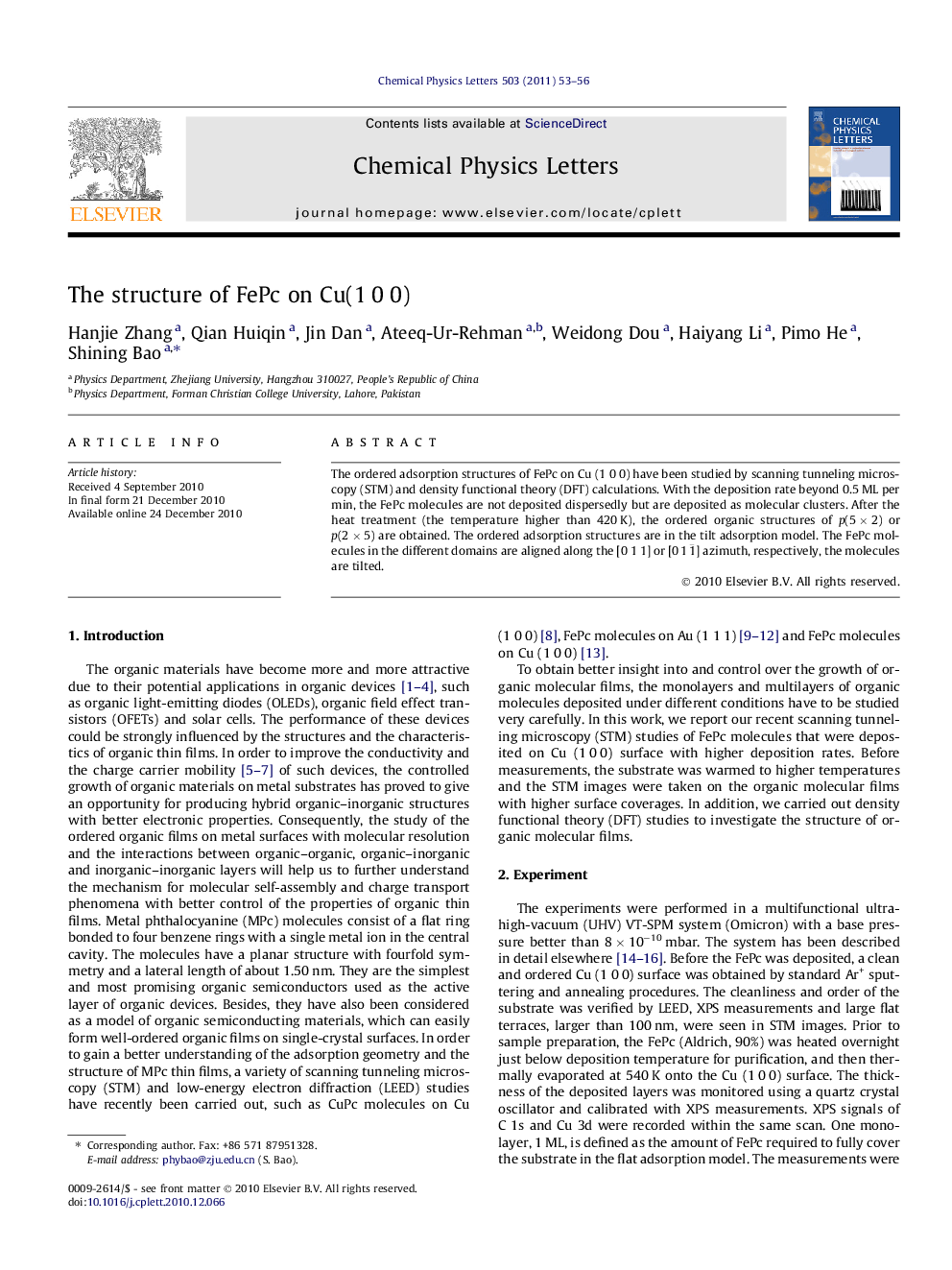| کد مقاله | کد نشریه | سال انتشار | مقاله انگلیسی | نسخه تمام متن |
|---|---|---|---|---|
| 5384364 | 1505007 | 2011 | 4 صفحه PDF | دانلود رایگان |

The ordered adsorption structures of FePc on Cu (1 0 0) have been studied by scanning tunneling microscopy (STM) and density functional theory (DFT) calculations. With the deposition rate beyond 0.5 ML per min, the FePc molecules are not deposited dispersedly but are deposited as molecular clusters. After the heat treatment (the temperature higher than 420 K), the ordered organic structures of p(5 Ã 2) or p(2 Ã 5) are obtained. The ordered adsorption structures are in the tilt adsorption model. The FePc molecules in the different domains are aligned along the [0 1 1] or [011¯] azimuth, respectively, the molecules are tilted.
When the coverage is lower than 1 ML, obtained with the deposition rate of 0.1 ML per min, the FePc molecules are adsorbed dispersedly and form isolated adsorbates with their molecular planes parallel to the substrate.With the deposition rate beyond 0.5 ML per min, the FePc molecules are not deposited dispersedly, but are deposited as molecular clusters. After the heat treatment (the temperature higher than 420 K), the ordered organic structures of p(5 Ã 2) or p(2 Ã 5) are obtained. The FePc molecules in the different domains are aligned along the [0 1 1] or [0 1 1] azimuth respectively, the molecules are tilted.196Research highlights⺠With higher deposition rates (0.5 ML per min), the FePc molecules are not deposited dispersedly, but are deposited as the molecular cluster. ⺠After the heat treatment (the temperature of 420 K), the FePc molecules in the different domain are aligned along the [0 1 1] or [0-1 1] azimuth respectively, the molecules are tilted, and the ordered organic structures of p(5 Ã 2) or p(2 Ã 5) are obtained. ⺠The ordered organic structures in the tilted adsorption model are not obtained in large area even if the heat treatment is taken at higher temperature, since the molecular cluster doposited on the substrate is not large enough.
Journal: Chemical Physics Letters - Volume 503, Issues 1â3, 8 February 2011, Pages 53-56